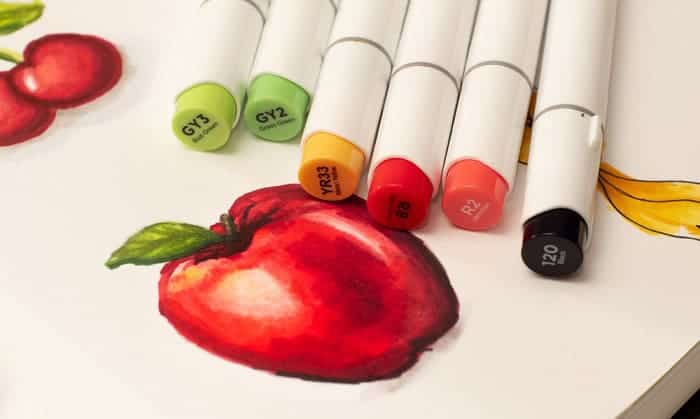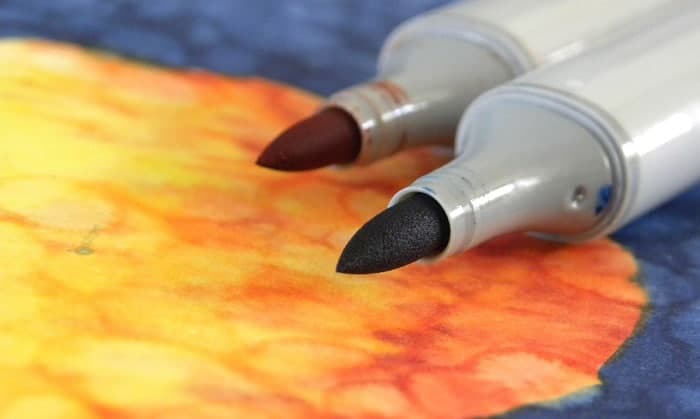Are you struggling with putting the right colors and shading to your artwork? Well, you are not alone. Putting colors on your artwork is tedious and critical work.
Poor colors can change the overall quality, which fails to bring your artwork to life. Shading and highlights also play a part. Do not worry, though. We will help you know how to color with Copic markers.
That way, you can deliver the right impact for your viewers by picking the right colors and creating highlights. Stay tuned and discover all about coloring using the ever-challenging Copic markers.
Table of Contents
Prepare the Things You Need
It is always a good practice to prepare all the things you need before starting off an activity. When coloring, gather the following tools, which will help you with line arts and shading:
- Copic Markers
- Sketching Paper or your Artwork
If you want your artwork to shine brighter, you can add these options to your materials:
- Lining Pens
- A White Gel Pen
Lastly, you would need patience when it comes to coloring. Using Copic markers for colors can be challenging as you need time’s favor to deliver excellent results.
How to Color with Copic Markers Step by Step Instruction
Without further ado, I will now tell you all the steps to color your artwork.
Step 1: Select the Right Copic Marker Colors
The first step in coloring with copic markers is to select the accurate colors that you will use for your artwork. If you are doing a portrait, then browns and other skin-toned colors should come first.
It is best to choose the colors that you think would deliver your vision to the viewer. Primary colors must be prioritized. For my primary colors, I like to go for Y17, B24, G05, and R29. However, every art style is unique, so your color choices are all up to you.
Once you finalized your four primary colors, it is now time to choose four skin-toned ones. These are also known as flesh tones. Next, choose four different shades of greys.
I highly suggest choosing colors that do not dramatically vary from one another because these would serve as the base colors and colors for textures and shadows.
Step 2: Work on light areas before dark ones
If your artwork is a portrait, start off by coloring the character’s skin. Going for the skin first is an excellent principle to uphold, unless you’re going for a character with dark skin. This is also applicable for characters wearing light-colored clothes.
The general rule of thumb is to color the light areas first before doing the dark ones. It’s because colors tend to blend and bleed, and the dark colors get pulled to the lighter ones you are working with. The color may end up in areas that you do not intend it to go.
It’s also a good practice to sort out the color shades in a lightest to darkest order. You can use scratch paper to scribble on and test the different shades because the cap’s color may look way dissimilar to its actual ink.
Step 3: Add Depth by Shading
After you colored your work with the flats and basics, it’s time to add shades. Shading is a good practice as it adds depth and dimension to your artwork. Start by choosing a specific direction to determine light source intensity.
This will give your work some shadows that deliver a reliable credibility degree.
Take the next dark color in your color list and use it to add shades. The color tends to get darker when you overlap them. One good example is how your chin overshadows your neck, giving your neck a slightly darker shade.
It is good to add a little bit of shade under the eyelid for portraits.
If you lack a darker-colored marker for shading, you can always use the same previous marker you used in flat colors to shade on areas. The result may not be as dynamic as a darker color, but it still works.
Once you are done, you can always take your shading to a whole new level by getting another darker color and adding shading to the darkest areas. This will add extra depth and dimension to your work.
Step 4: Add Some Highlights to your Work
You are now one step closer to bringing your artwork to life. The next step is to add the opposite of shades, which are highlights.
You can use a white marker or the white gel pen that I added in the options earlier. For me, white gel pens, like the Arteza White Gel Pen Set, give me better control in adding delicate highlights. Plus, you can even tone down its hardness by blotting the ink.
Step 5: Repeat the Previous Steps Until You Get The Desired Result
Keep coloring without forgetting to constantly balance the shade and highlights in each color section. Always remember the light to dark rule when coloring.
Once you’ve finished coloring with copics, you can now proceed to inking or line art.
Step 6: Start Inking
Add a little bit of outline to your work. It all depends on you if you want thicker or thinner line variations. For me, I start with thicker outlines. Then, I change to a fine pen to trace the inward details.
If there are linings that aren’t shown off well because the color’s too dark, you can always have the white gel marker to draw white lines.
And that’s it! You now colored your artwork using Copic markers. Read more below as I laid out more Copic marker tips.
Pro Tips:
- The longer you leave your Copic pen on the paper, the darker the color will get. This thing will either ruin or enhance your work, depending on your planned coloring. So, it is best to remember this tip.
- When doing the outline, always remember to stay in the lines. Although some art styles do not require you to follow the lines diligently, staying in the lines gives you a cleaner work result that looks appealing to the viewer’s eyes.
- Color quickly. This will help you color with markers without streaks.
- There would be an uneven result when you color in a horizontal zig-zag motion. That’s why it’s always best to start on one specific side and do the colors in one circular motion while saturating the ink.
- While coloring, keep the Copic marker’s nib attached to the paper’s surface. Create small circles at first and eventually transform them into bigger ones.
If you want to learn more about Copic marker techniques, check out this video:
Conclusion
The steps are pretty easy, right? Tell us your experience in the comments. If you enjoyed the tutorial, share this with your friends and family. Who knows? They might find the tips on how to color with copic markers handy. And you would help us a lot by doing so.
Remember to have patience when coloring and choose the right shades and colors for your work. If you want to leave a bit of an impression through highlights, try out the Arteza White Gel Pen Set.
Now you can bring your artwork to life with no worries!

I am a former art teacher, so it is evident to me the importance of art in educating the new generation. We also want to help parents who plan to teach their children and desire the best tools and tips for them.


